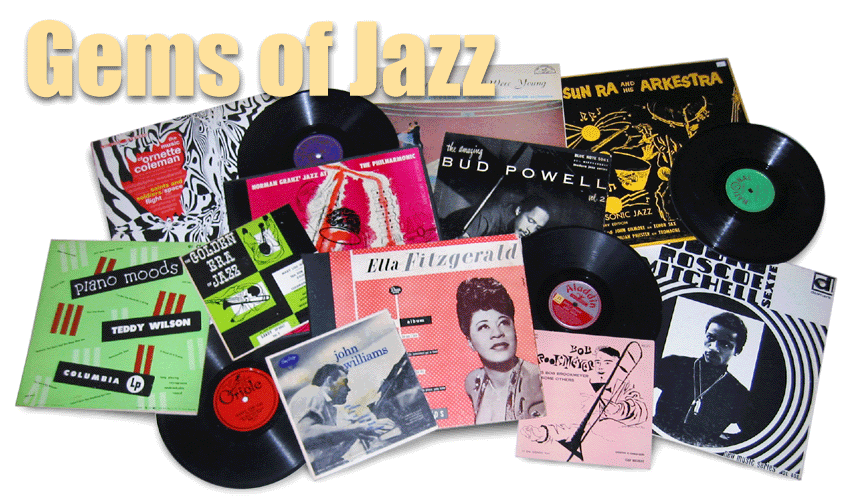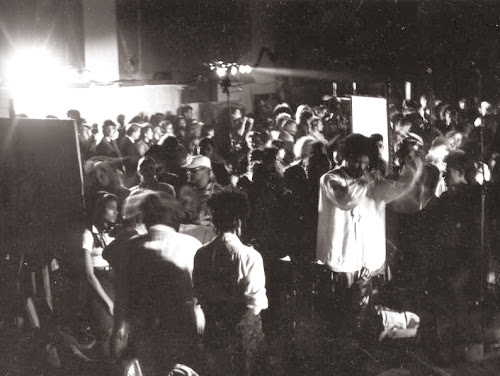Sometimes you come across the most amazing things in the most out-of-the-way places. A cliche, yes, but true enough. Here's yet another affirmation of it's shopworn validity.
 |
| Melby's Market, the general store at the crossroads in North Waterford. Bison burgers are the house specialty. |
At North Waterford's crossroads, we decided to go left. There were no signs, and no indication of anything like a fairgrounds. But then, half-a-mile up the road, there was a hand-painted, weather-beaten board proclaiming "Fair Parking" with an arrow pointing left up a dirt road that skirted around what appeared to be a dilapidated, abandoned chicken coop. Never shy about dirt roads, my parents veered up the hill, bouncing the car over ruts and stones and on into the woods.
 |
| The World's Fair's logo |
True to the claim in the classified ad in the paper, there was a flea market going on. A dozen sellers had set up tables in a few of the sheds, their wares piled on overturned cardboard boxes or arrayed on folding tables. It was a pretty meager showing, but we'd come that far, so we climbed out of the car. Romance novels, kiddie clothes, VCRs, kitchen gadgets, crocheted novelties, rusty tools – the usual stuff, being picked over by a few buyers. But then something caught my eye.
 |
| An artifact from the jazz world of December 1936 – Down Beat was still a monthly then. |
One of life's great (or not so great) mysteries.
The paper was in great shape with no tears and no pages missing. I paid a buck for it and spent the better part of an hour going through it back at my folk's place. Here were stories that mentioned Earl Hine's orchestra at the Grand Terrace in Chicago, a blurb about young trumpet upstart Roy Eldridge tearing it up over nightly network broadcasts, and a feature about Mildred Bailey and her new hubby, Red Norvo. Plus loads of great period advertisements, record reviews and nightclub listings. One thing that struck me: So many of the musicians mentioned I'd never heard of before. Shown on the mag's cover were Margie Lindt, Bob "Bazooka" Burns, Frankie Masters, Romo Vincent, Charlie Trotta, John O'Donell and many others. Who? I don't know, and history doesn't either.
But there was one fellow – a pianist – whom history hasn't forgotten. And the squib in Down Beat that mentions him is perhaps one of his first national press clippings. It's 32-year-old Bill Basie, nicknamed "Count," and it prominently features what the magazine claims is the first photo to be published of the band leader. Basie and the boys had been getting their road show together, playing at the Grand Terrace for an extended stay before heading to New York to record for Jack Kapp and the Decca label. John Hammond, who had discovered them when he chanced to hear a radio hookup from a Kansas City nightery, had tried to get them signed to Columbia. But Kapp had beaten him to the punch. So Hammond famously arranged to secretly record Basie in a small group (with Lester Young) while the band was in Chicago. Those sides were issued as by "Jones-Smith Incorporated," and they remain classics.
Though it took place just a few months earlier, there's no mention of that recording session in the article. But the orchestra gets a glowing review and Basie and his rhythm are rightly credited with being the finest in the nation. So I thought it only appropriate that Gems serve up a few examples of the Count at the piano to celebrate this bit of jazz history that serendipitously came my way in far-flung North Waterford, Maine.
This is a French release, consisting of rare airchecks and TV broadcasts – one of vast series of intriguing records that were issued by Musidisc in the 1970s. They're pretty common, but this one seems harder to find than others. The music here is extraordinary, with Basie providing what amounts to a primer on blues piano. There are also great solos by bassist Eddie Jones and even a "solo" from guitarist Freddie Green (on "Cute"). Wardell Gray is present, too, on one selection. "Nails" is a remarkable display of wry humor and subtle ensemble playing, not to be missed. The sound varies – tape hum being the worst of the defects – but the music, as always, is "keel-ling." And next time you're in the Lakes Region in Maine, check out the North Waterford World's Fair. You never know what you'll find ...
These files were ripped from the original vinyl with, in this case, no cleaning of the sound whatsoever.


The Soloist
Count Basie
Musidisc 30 JA 5204
Count Basie, p; various groups including Walter Page, Freddie Green, Jo Jones; Wardell Gray, Clark Terry, Marshall Royal; Eddie Jones, Sonny Payne; and others (see download for full personnel, dates).
Airchecks, TV broadcasts; New York, Paris, Zurich, San Francisco; Various dates, 1941-1967
1. There'll Be Some Changes Made
2. Rockin' Chair
3. Basie Boogie
4. Basie Boogie
5. Basie Boogie
6. Basie Blues
7. All of Me
8. Cute
9. Blues No. 2
10. Squeeze Me
11. Blues No. 1
12. Blues No. 3
13. As Long As I Live
14. Blues No. 4
15. Nails
Find it here: https://www.mediafire.com/?dxjy4lzlk4p3cc8










